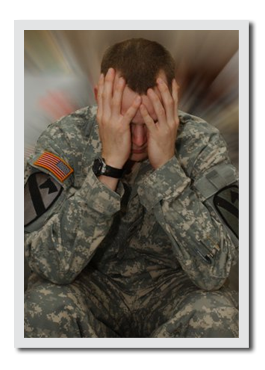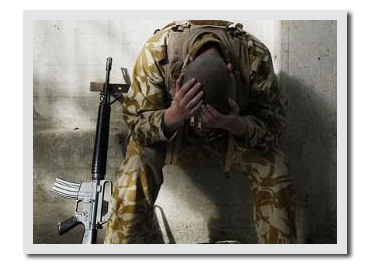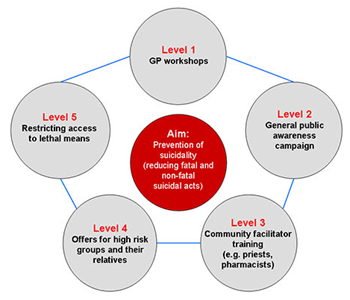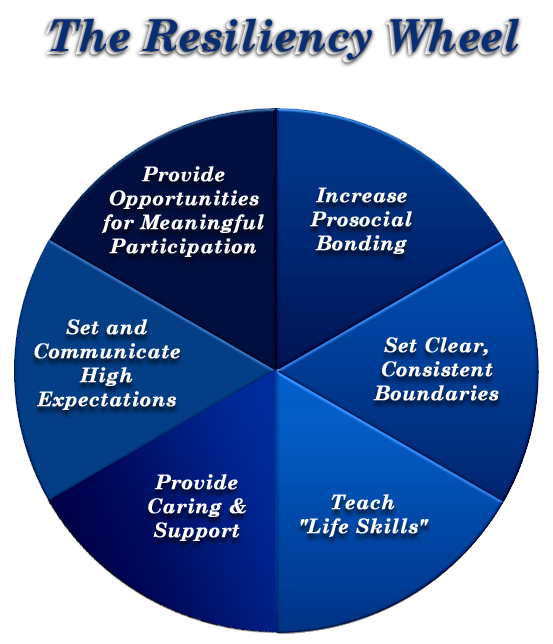Suicide
This information was obtained from credible government and private organizations and results from evidenced-based medicine; however, it is not meant to replace a medical or psychiatric professional’s advice. It was reviewed by a psychologist who is well-versed in this information and who treats many Veterans. Updated August 13, 2016.
Suicide in the military
If you are contemplating suicide or experiencing suicidal thoughts, immediately call the National Suicide Prevention Lifeline (available 24/7) at 1-800-273-8255, press 1 for the military-specific lifeline or use their website chat feature: http://www.suicidepreventionlifeline.org/
 As a subset of the U.S. population, the military has unique characteristics, for example, inherent duties and responsibilities that are not part of civilian life, such as deployment, combat exposure, and being fit and ready for duty 24/7. These unique characteristics increase incidence of mental health disorders (e.g., depression, anxiety, and alcohol misuse) that are known risk factors for suicide. Demographics alone in regard to the disproportionately young male population increase suicide rates. Additionally, differential access to firearms, a common means for suicide in the military, increases the incidence of successful suicides. However, there are many protective factors specific to the military and its Service members (e.g., social support and belongingness, pride and sense of accomplishment) that can mitigate risk factors. As a result, there is a complex relationship between military service and suicidality because of its unique characteristics and the overall interplay of risk and protective factors that may differ in relative importance for each Service member.
As a subset of the U.S. population, the military has unique characteristics, for example, inherent duties and responsibilities that are not part of civilian life, such as deployment, combat exposure, and being fit and ready for duty 24/7. These unique characteristics increase incidence of mental health disorders (e.g., depression, anxiety, and alcohol misuse) that are known risk factors for suicide. Demographics alone in regard to the disproportionately young male population increase suicide rates. Additionally, differential access to firearms, a common means for suicide in the military, increases the incidence of successful suicides. However, there are many protective factors specific to the military and its Service members (e.g., social support and belongingness, pride and sense of accomplishment) that can mitigate risk factors. As a result, there is a complex relationship between military service and suicidality because of its unique characteristics and the overall interplay of risk and protective factors that may differ in relative importance for each Service member.
Prior to the wars in Iraq and Afghanistan, military suicide rates were lower than the civilian population. However, because of the type of wars, how long they have lasted, increased survival rates, and an escalated presentation of mental health disorders, suicide rates have steadily risen since 2003 to a high in 2012. In 2012, military suicide rates (U.S. Army and Marine Corps) surpassed civilian suicide rates as well as combat deaths. There was a slight decline in the number of active-duty Service member suicides for the year 2013.
The Department of Defense Suicide Event Report (DoDSER) is a standardized suicide surveillance program used across Services in an effort to facilitate military-wide suicide prevention. Its annual report summarizes military-wide fatal and nonfatal suicide events. DoDSER does not reach the level of research protocol; it merely monitors suicide events. Consequently, the suspected risk and protective factors the program identifies cannot be used to make inferences or conclusions about specific factors in relation to their role in suicide prevention. The DoDSER reports new common demographic characteristics for Service members who attempted and completed suicide starting in 2013:
- Male
- Caucasian
- Non-Hispanic
- Under 30-years old
- Junior enlisted (E1-E4)
- High school education
Note: these characteristics are not exclusive to suicidal Service members.
Primary methods for successful suicides were hanging and firearms (non-military issued); for attempted suicides drugs and/or alcohol.
Most common behavioral health diagnoses for successful suicides were mood and adjustment disorders; for attempted suicides mood and anxiety disorders.
Most common psychosocial stressors for successful suicides were failed relationships (mostly intimate) and legal problems; for attempted suicides failed relationships and financial/workplace problems.
History of deployment was indicated in most suicides and 50% of attempts.
Note: Recent studies analyzing data obtained from the Army Study to Assess Risk and Resilience in Servicemembers (Army STARRS) challenge the correlation of deployment with suicide specifically with the new suicide demographics listed above; many completed suicides for this group have had zero to one deployment.
The complete version of the DoDSER calendar Year 2013 Annual Report is here: http://t2health.dcoe.mil/sites/default/files/DoDSER-2013-Jan-13-2015-Final.pdf
The Department of Defense compiles and reports suicide data across all service branches for Active and Reserve (including the National Guard) Components only in its Department of Defense Quarterly Suicide Report for each calender year.
Suicide data for CY2013 – CY2016
The Defense Suicide Prevention Office (DSPO) has published the first quarter suicide numbers for 2016. NOTE: These numbers do NOT include Veteran suicide data. This data only lists suicide numbers for the Active-duty Component (Air Force, Army, Marines, and Navy) and the Reserve Component (Reserves: Air Force Reserves, Army Reserves, Marine Reserves, and Navy Reserves AND National Guard: Air National Guard and Army National Guard).
In the first quarter of 2016, there were 58 Active-duty suicides down from 60, 73, and 67 suicides for Q1 of 2015, 2014, and 2013, respectively. All branches decreased except the Marines who suffered a saddening increase in suicides from 3 in Q1 of 2015 to 12 in Q1 of 2016.
The Reserve Component again saw an increase in suicides. In the first quarter, there were 52 suicides up from 42 and 46 for Q1 of 2015 and 2014, respectively, but down from 55 in 2013.
- The Reserves had18 Q1 suicides in 2016, a modest increase compared to 13 Q1 suicides in 2015, but lower than the 24 suicides in Q1 of 2014 and 27 suicides in Q1 of 2013.
- Again, it was the National Guard that fared the worst with steady increases in suicides in each quarter to this quarters high of 34. The ARMY NG is largely affected with 29 suicides in Q1 of 2016 up from 21,16, and 26 Q1 suicides during 2015, 2014, and 2013, respectively.
You can see the entire report and the table comparing suicides for CY2013 - CY2016 broken down by components and service branches as well as by quarters with this link:
http://www.dspo.mil/Directorates/Data-Surveillance/Quarterly-Reports/
Veterans

Veterans have an increased risk for suicide, about twice the risk of the civilian population. The suicide rate for Veterans is between 18 – 22 per day depending on the source. When looking at numbers, how they are determined and interpreted must be viewed with caution. The often cited number—22 Veteran suicides per day—may not be accurate, and in fact, may be higher. In one case, this figure was determined from death certificates with suicide listed as the cause of death from ONLY 21 states during a specific period of time. Furthermore, the 21 states the researchers used to calculate the data did not include the states with the largest Veteran populations (e.g., Texas, Georgia, Arizona, California, and North Carolina). The report also does not take into account the spike in suicides for the highest risk group of Veterans (18-24) as reported in the January 2014 update. The report itself says this number should be viewed with caution because it cited “significant limitations” in the available data and uncertainty of Veteran identifiers on the death certificates. It makes the number 22/day highly questionable in terms of accuracy. Ultimately, the numbers matter in terms of what is or is not being done to decrease suicide rates. Therefore, the importance of the numbers lies in monitoring and evaluating suicide prevention program success or failure and the need for program improvement or entirely new programs. There are those who believe that constantly focusing on the numbers takes away from solving the multifactorial problems inherent in suicidality.
Still, the number of suicides in the military, both active-duty and Veteran, is too high and unacceptable.
See the Va’s 2012 Suicide Data Report and 2014 update from: http://www.va.gov/opa/docs/suicide-data-report-2012-final.pdf and http://www.mentalhealth.va.gov/docs/Suicide_Data_Report_Update_January_2014.pdf
There are links located in the credible resources section for more in-depth information about the subject matter in this section.
What factors help develop suicidal behavior and what are suicidal processes?
Several factors combine to place people at risk of suicide—social, demographic, psychological, and neurobiological—that through complex processes contribute to people developing suicidal behaviors. In order for risk and protective factors to be effectively used to predict suicide risk, there are several suicide processes that must be distinguished because the risk and protective factors will differ for each process. For example, research indicates a notable relationship between PTSD and suicidal ideation and attempts, but not increased completed suicides. Therefore, for those with PTSD evaluation of specific risk/protective factors in relation to suicidal ideation and attempt is important.
- Suicide ideation is when people have serious thoughts about killing themselves.
- Suicide plan is when people have devised an actual plot and have the means to kill themselves.
- Suicide attempt is when people injure themselves with some intent to die.
- Suicide death (successful suicide) is when people successfully kill themselves.
There are two other delineations. Suicidal self-injury occurs when people injure with the intent to die and non-suicidal self-injury (NSSI) when people self-injure with no intent to die, either to decrease emotional distress or to use as a call for help (suicide gesture). However, these gestures should not be taken lightly because those with multiple prior attempts, even those engaging in NSSI, have a high likelihood of dying by suicide. Instead, those engaging in these gestures require thoughtful assessment and treatment in an empathetic and nonjudgmental environment in an effort to help them understand their behavior and find safer and healthier ways to ask for help.
There are links located in the credible resources section for more in-depth information about the subject matter in this section.
Is there a theory that can explain suicide in the military?
Understanding suicide in the military is a complex undertaking; using a framework such as the Interpersonal-Psychological Theory of Suicide (IPTS) Risk is helpful as it has empirical support for its applicability to military populations. Evaluation of suicide note communications indicate that at the time of serious suicidal ideation, planning, attempt, and successful suicide (a) Service members have a personal sense of incompetence and consider themselves ineffective, a failure to society, a liability and burden to others, and that the people in their lives would be better off if they were dead – Perceived Burdensomeness and (b) Service members feel they do not belong in the military and/or civilian population (e.g., strained/difficult relationships with unit and family members), experience lack of meaningful human connections, and think that no one cares about them – Thwarted Belongingness. Together, these constitute the desire to die and are highly associated with serious suicidal ideation. Greater intensity of the two equates with greater risk. When these two beliefs, which explain why someone would want to die, are added to (c) those who are capable of suicide, called acquired ability, suicide risk is vastly higher and it may be this last domain that is the primary influence on engaging in serious suicidal behavior.
Acquired ability is universally increased from and profoundly impacted by military service. Acquired ability results from increased knowledge about and access to  lethal means (e.g., firearms) and habituation, that is, reduced fear of and tolerance to pain and death over time (e.g., repeated self-injury reduces fear of pain and death; combat exposure and consistent use of firearms increases Service members’ ability to tolerate fear of death even if it is painful and frightening). The degree of acquired ability differentiates those who want to die but either choose a nonlethal method or not attempt at all versus those who want to die and choose a lethal method, thus, increasing the odds of a successful suicide. It is positively linked with prior suicide attempts—Service members with more previous attempts have greater acquired ability, which then increases suicidality. In addition, acquired ability is associated with self-mutiliation and promiscuity.
lethal means (e.g., firearms) and habituation, that is, reduced fear of and tolerance to pain and death over time (e.g., repeated self-injury reduces fear of pain and death; combat exposure and consistent use of firearms increases Service members’ ability to tolerate fear of death even if it is painful and frightening). The degree of acquired ability differentiates those who want to die but either choose a nonlethal method or not attempt at all versus those who want to die and choose a lethal method, thus, increasing the odds of a successful suicide. It is positively linked with prior suicide attempts—Service members with more previous attempts have greater acquired ability, which then increases suicidality. In addition, acquired ability is associated with self-mutiliation and promiscuity.
Assessing and evaluating the presence and severity of risk factors fitting criteria for perceived burdensomeness, thwarted belongingness, and acquired ability can help determine who is at risk for suicide and for whom targeted prevention and treatment intervention is essential.
There are links in the credible resources section for more information about the subject matter in this section.
What are the short-term precursors or warning signs of suicide that indicate suicide may be imminent?
Dramatic changes in mood, particularly
- Hopelessness
- Purposelessness
- Rage, anger, revenge seeking
- Anxiety, agitation, unable to sleep, sleeping all the time
Withdrawing from family, friends, and community
Increased substance use
Acting recklessly without thought of consequences
Feeling trapped like death is the only way out
Feeling like there is no reason for living
Talking and writing about dying and death
Threatening suicide, looking for means (e.g., medications, firearms)
Here is an easy way to remember the warning signs of potentially imminent suicide:
IS PATH WARM
I Ideation
S Substance Use
P Purposelessness
A Anxiety
T Trapped
H Hopelessness
W Withdrawal
A Anger
R Recklessness
M Mood Changes
There are links located in the credible resources section for more in-depth information about the subject matter in this section.
What are the risk factors for suicide (static, long-term precipitants)?
Risk factors can be modifiable, unmodifiable, and potentially modifiable. There are various suicide risk stratifications that range from simple to complex and look at active-duty versus Veterans. Here are two risk factor lists; one is a simple list of risk factors and one is a more complex list of risk factors with multiple stratification levels for leaders and medical personnel, or anyone interested in more in-depth knowledge about suicide risk factors.
The Center for Military Health Policy Research (CMHPR) and Center for Deployment Psychology (CDP) list the following risk factors for suicide:
- Age groups 18-44 (greatest risk) and 64 and older
- Prior suicide attempts (the strongest predictor of a subsequent successful suicide); more than three times more likely to have another attempt
- Family history of suicide
- Mental health disorders, in particular, depression, anxiety and substance use disorders; 90% of completed suicides are among those with mental health disorders at the time of their death
- Sleep disorders – Service members with sleep disturbance not only report more suicidal thoughts, but they are more likely to plan and carry out their suicide*
- Substance use disorder and those who use alcohol heavily as well as other drug use
- PTSD is a modest risk factor; it is correlated with suicide ideation/attempt, but less strongly correlated to successful suicide than other mental health disorders (e.g., depression, other anxiety disorders, and substance use); however, comorbidity is important to consider
- Traumatic Brain Injury (TBI); risk differs per type of injury
- Chronic pain; risk doubles with head pain and pain from multiple ailments
- Unexplained changes in mood
- Hopelessness (high risk), worthlessness, aggression, impulsivity, and decreased ability to problem-solve
- Guilt from experiences during combat that leave Service members feeling disgraced, unlovable, undeserving, and isolated, which may lead to lack of belongingness
- Survivors guilt contributing to feelings of failure and responsibility
- Stresses placed on families during deployment that negatively affect family’s post-deployment (e.g., increased domestic and intimate partner violence, interpersonal difficulties, and problematic relationships with children)
- Feeling out-of-place when Service members return home from deployment or leave military service, problems reintegrating and re-engaging
- Post combat exposure problems like mistrust, hypervigilance (on-guard), emotional numbing
- Legal, financial, and occupational problems
- Living alone, unmarried, separated, divorced
- Life events such as death of a family member or relationship problems that serve as precipitating events or triggers; stressful military life events
- Medical or administrative discharge planning
- Easy access to firearms (vastly increases suicide rates)
- Hearing about others’ suicides and media reports of suicide increase suicide rates, particularly with young adults through "contagion" when one suicide leads to another.
*The Center for Deployment Psychology reports that sleep problems are now stronger predictors (current and future ) of suicidal ideation and behavior for young adults, outperforming depression and hopelessness as a risk factor.
The American Association of Suicidology (AAS) has one of the more complex risk stratifications divided into two categories:
Risk Factors for Suicide and Suicidal Behaviors I, which includes (a) perpetuating risk factors that are permanent and non-modifiable and (b) predisposing and potentially modifiable risk factors; and Risk Factors for Suicide and Suicidal Behaviors II, which includes (a) contributory risk factors, (b) acute risk factors (if present increase near-term risk), and (c) precipitating or triggering stimuli (these heighten period of risk if one is vulnerable to suicide)
Permanent and non-modifiable factors include:
- Demographics such as race, age, sex
- Parental history of divorce, violence, substance use, and hospitalization for a major psychiatric disorder
- History of family suicidal behavior and suicide
- History of frequent mobility, self-harm/injury, risky/violent/reckless behavior, trauma or abuse (physical or sexual), suicidal ideation (thinking about committing suicide), suicide attempt especially if repeated, and psychiatric hospitalization
Predisposing and potentially modifiable risk factors include:
- Mood, conduct, eating, anxiety, substance use, personality, and body dysmorphic disorders
- Schizophrenia
- Functional impairment and/or chronic pain
- Comorbid disorders (TBI, PTSD, and especially depression and substance use, including smoking)
- Low self-esteem and high levels of self-loathing
- Perfectionism, especially in those with depression
- Exposure to a loved one’s death by suicide
- Tolerant attitude toward suicide
- Intolerance to sexual orientation
Risk Factors for Suicide and Suicidal Behaviors II
Contributory risk factors
- Stress (social, educational, occupational, relationship related etc.)
- Sudden loss of job and enduring unemployment
- Easy access to or ownership of firearms
Acute risk factors (if present increase near-term risk)
- Recent separation or divorce especially if you feel rage or victimization
- Recent suicide attempt
- Current self-harm behaviors
- Current suicidal ideation including threats, communications of, preparation for, and plan
- Increased/excessive substance use
- Dramatic changes in mood
- Loss of interest in and withdrawal from usual interests, activities, supports; increased isolation
- Anger, Rage, Aggression, Seeking revenge
- Anxiety, panic, paranoia, confusion, disorganization, agitation, impulsivity
- Hopelessness, feeling trapped (death is the only way out), rumination (constantly rethinking negative events), perceived burdensomeness, sense of having no purpose, poor problem solving, thinking in black and white terms, having little to no reason to live, unable to imagine the future in a positive way
- Insomnia, persistent nightmares
- Recent diagnosis of chronic/terminal illness
Precipitating or triggering stimuli (heighten period of risk if one is vulnerable to suicide)
- Recent exposure to another’s suicide, especially a friend or loved-one
- A real or anticipated event causing or threatening: guilt, despair, shame/humiliation, loss of status, legal or financial problems, and feelings of rejection/abandonment
Military Risk Factors for Veterans per the VA
- Being in the National Guard and Reserves
- Caucasian, 18 to 24, those with limitations in activity, and those with more education HAVE HIGH RATES OF COMPLETION
- VHA service users under age 30, especially 18-25; female VHA service users (there is no pattern of change in male VHA service users), males who do not use VHA services
- Difficulty with coping
- Severe role impairment prior to enlistment that affected work performance, close relationships, and home and social life
- Presence of psychiatric disorder; increases with comorbidity
- Firearms (own one, being familiar with firearms, continued use of firearms is highest risk), for female VHA user firearms and poison
- Previous and current deployment
- New risk found in those never deployed
- Suicide attempts prior to enlistment (nearly 50% reported suicide attempts)
- Mental disorders reported by Soldiers (self-identified by 85% as occurring pre-enlistment), particularly, substance use disorder, attention deficit hyperactivity disorder (ADHD), intermittent explosive disorder {recurrent episodes of extreme anger or violence})
- Serving between 2004 and 2009 regardless of deployment (e.g., even non-deployed had higher rates)
- Female Soldiers had higher suicide rates while deployed than deployed male Soldiers
- Top stressors are: job stress; psychiatric disorders; failed relationships, particularly intimate relationships; and legal and financial problems.
There are links located in the credible resources section for more in-depth information about the subject matter in this section.
What are the resiliency factors that protect against suicide?
Active-duty protective factors include:
- Health lifestyle promotion

- Strong relationships with peers and family
- Social and spiritual support
- High levels of life satisfaction
- Sense of belonging and strong bonds/camaraderie with fellow Service members
- Battle buddy partnership (the expectation is to assist each other in and out of combat)
- Brother-of-arms bonds created during combat deployment
- Effective coping, interpersonal, and problem-solving skills; those who see their problems as solvable are less apt to commit suicide
- Access to services, including mental health services that were guaranteed to Service members when they signed on to serve their Nation
- Culture/policies that decrease stigma and encourage help seeking behavior
- Feeling honorable, purposeful, accomplished
- Contributing to society and country, part of a greater cause
- Sense of mission, pride, viewing combat with overall positive meaning and that Service members play an integral role in mission success
- Unit cohesion, which is likely related to good leadership
- Effective leadership: Service members with the lowest number of mental health symptoms had low combat experiences and high leadership effectiveness; highest number of mental health symptoms had high combat experiences and low leadership effectiveness
- Opportunity for leadership responsibilities, self-discipline, greater sense of independence
VHA use: Males (especially aged 35-64), who use VHA services, and those with mental health diagnoses who use VHA services, VHA users who have survived a suicide attempt (protective for 12 months)
There are links located in the credible resources section for more in-depth information about the subject matter in this section.
What prevention programs are available to stop suicide?
RAND evaluated a host of prevention programs along a continuum that could be applied to the military population. They ranged from targeting entire populations to those that focused on specific at-risk groups. Prevention programs should be shown by the evidence-base to be effective and that is where the problem lies; RAND found very few programs were shown by empirical evidence to be effective in reducing suicide. The most effective programs are those aimed toward selected high-risk groups (e.g., previous suicidal behavior).
Universal programs targeting entire populations included two components: raising awareness/skill-building and *screening/referral for mental health disorders and suicidal ideation/plan/gesture/attempt.
Selected programs fall into two categories: targeting high-risk groups who have known risk factors (e.g., mental health disorders) and programs for suicide attempters brought to the attention of the medical staff.
RAND provides six practices that should be part of any comprehensive suicide-prevention program:
Raise awareness and promote self-care - Education and awareness programs are part of a comprehensive suicide prevention campaign. Prevention efforts should consider the unique needs of the military population, for example, targeting and reducing stigma as well as increasing self-efficacy (the power to and benefit of successfully caring for yourself) and taking care of each other. Programs should address current and changing risk factors and promote protective factors in order to intervene before Service members reach the point of wanting to commit suicide. Reducing risk factors is an important educational component. Skill-building, which has been empirically proven as important prevention activity at all stages, reduces many risk factors while fostering protective factors.
 Identify Service members at high risk for suicide – Primary care workers and gatekeepers (e.g., non-medical personnel who are trained to identify those at-risk and get them into care) can use targeted approaches to identify at risk Service members through *screening, not only for suicide risk level, but for presence of mental health disorders, a strong risk factor for suicide.
Identify Service members at high risk for suicide – Primary care workers and gatekeepers (e.g., non-medical personnel who are trained to identify those at-risk and get them into care) can use targeted approaches to identify at risk Service members through *screening, not only for suicide risk level, but for presence of mental health disorders, a strong risk factor for suicide.
Ensure access to quality care – There are a number of barriers to quality health care, including stigma, insurance gaps, location of services, lack of evidence-based care, problems with continuity/coordinated care, etc. Although, reducing barriers to care has not been empirically shown to reduce suicides, what is known is that providing care for at-risk Service members does reduce suicides.
Provide quality care – A recent evaluation of mental health care programs across the military by the Institute of Medicine (IOM) under direction of the Department of Defense (DoD) indicates there is a severe lack of quality mental health care; the care provided is inadequate and ineffective with little to no program monitoring and evaluation. This will require change and research. Although, there are not many programs that empirically prove that they reduce suicide, there are a few; they are listed in the prevention (e.g., means reduction) and treatment (e.g., psychotherapy) sections.
Restrict access to lethal means – There is empirical evidence that restricting access to firearms, medication, and other lethal means does reduce suicides. This may be difficult in the military, particularly in relation to firearms because they are readily available, especially during deployment and because of the mindset regarding the 2nd amendment. Therefore, it may be more beneficial to restrict access to firearms only for those who are deemed at high risk for suicide.
Respond appropriately (postvention response) – There is empirical evidence of what is called imitative suicide, in which the response to hearing about a suicide increases suicide in others, particularly in young adults. Therefore, how suicides are reported by the military and media are areas for targeted prevention interventions. For example, suicides should be reported with limited details; the details should be simple and to the point, not glorified depending on the circumstances.
*There are indications that screening programs for suicide are controversial because of the belief that civilian screens do not take into account the unique characteristics of military life, but more importantly, there is little acceptance by Service members, which stops them from seeking care. Until proven otherwise, though, civilian screens should be used in the military setting.
Each service branch across the DoD has its own suicide prevention program, some more successful than others. They will be explained in detail in the near future. RAND evaluates these programs in relation to RAND’s six practices providing both effective and less effective methods/initiatives/programs. RAND also provides recommendations. This information is important to know because the more successful programs may be adaptable to other branches. Those who are interested now can find the information here:
The War Within—Preventing Suicide in the U.S. Military from http://www.rand.org/pubs/monographs/MG953.html for the summary and full versions.
There are links located in the credible resources section for more in-depth information about the subject matter in this section.
How is the risk of suicide assessed?
Rudd proposed a risk continuum that incorporates all processes mentioned earlier (e.g., SI, Plan, SA), the presence and severity of risk factors, and the presence of resilience factors. The continuum ranges from minimal to extreme or imminent. It should be noted that Service members at chronic risk of suicide (e.g., ongoing risk based on history of depression, previous attempts and current risk/protective factors) can experience a trigger that puts them into acute suicidal crisis. In order to determine what stratum a Service member fits the following must be assessed:
- Predisposition to suicide (e.g., history of mental health disorder, suicidal behavior, and substance use, release from inpatient hospitalization for suicide attempt especially within
 the first 12 months)
the first 12 months) - Stressors and precipitating factors (e.g., significant identity, financial and interpersonal loss, acute/chronic health problems); presence of symptoms and their severity (e.g., symptoms related to major mood disorder, such as hopelessness {highest risk factor}, low-self esteem, and lack of interest in activities, and insomnia in conjunction with anxiety, substance use, and emotional turmoil {highest short-term risk}, and level of anger and agitation)
- Hopelessness in terms of duration and severity. Relief from feeling hopeless may be a primary motivator for committing suicide.
- Suicidal thinking in terms of frequency, duration, intensity, and specificity as well as presence of a plan, method/means, behavior, and intent
- History of each and every previous suicidal behavior in terms of frequency, context (what was going on at the time), lethality, number of identifiable preparations for death, and leaving enough time and opportunity to be rescued
- Impulsivity and level of self-control in terms of assessing for risky and self-destructive behaviors, subjective and objective measure of self-control, and number and type of coping mechanisms. Substance use consistently correlates with increased risk of suicide from impaired judgment, reduced inhibition, and increased depressive symptoms. Note that impulsivity more so than a having a plan is a more significant indicator of suicide attempts because of how the person reacts to stressful events. Impulsive, multiple attempters have long-standing suicide risk.
- Protective factors are important to assess because they reduce suicide risk and include: hopefulness, social support, religious commitment, good coping and problem-solving skills, participation in treatment plan, satisfaction with life; and fear of death, suicide, and social disapproval. However, no matter how many protective factors are present, the reality is, the intent to die can override rational thinking.

An appropriate assessment of the above will place Service members into one of several categories of risk level: minimal, mild, moderate, severe, and extreme/imminent. See treatment section for further explanation of each category.
Special Note: According to the Center for Deployment psychology, a history of two or more suicide attempts reflects a chronic baseline risk and Service members with this designation at the very least will always be at moderate acute risk. See http://www.deploymentpsych.org/system/files/member_resource/1-Depression_Suicide.pdf
What self-report measures are used to assess suicidality?
Beck Scale for Suicide Ideation
Beck Suicide Intent Scale
Beck Hopelessness Scale
The Suicidal Behavior Questionnaire – 18 (SBQ-18)
The Suicidal Behavior Questionnaire – Revised (SBQ-R), which is a brief measure to be used in settings where time is limited.
Use of self-report measures are important because they establish a level of severity baseline that future self-report results can be compared to for effectiveness of treatment and resolution of symptoms. In addition, they serve an important function in that Service members may report more symptoms on a paper and pencil questionnaires versus face-to-face interview. That being said, all self-reports require followed-up by clinician interviews so that baseline and acute suicide risk are thoroughly assessed/evaluated and to determine appropriate treatment.
There are links located in the credible resources section for more in-depth information about the subject matter in this section.
What are the treatment options available for Service members deemed at high risk for suicide?
 Interventions for Service members who have been identified at risk for suicide require treatment relevant for the acute risk continuum for which they are assessed. For example, those placed at high acute risk would require inpatient treatment until they are deemed well enough to transition to outpatient care.
Interventions for Service members who have been identified at risk for suicide require treatment relevant for the acute risk continuum for which they are assessed. For example, those placed at high acute risk would require inpatient treatment until they are deemed well enough to transition to outpatient care.
Outpatient interventions should focus on identifying and treating underlying mental health disorders that lead to suicidality as well as the precipitating factor (what pushed the Service member to the brink of thinking about, planning, and/or attempting suicide). Reducing risk factors and fostering protective factors are important interventions as well as addressing environmental interventions, which includes means reduction (reducing access to lethal means). This is achieved through two categories of evidenced-based treatments: crisis intervention and psychotherapy.
Crisis Interventions are based on level or degree of suicide risk as proposed by Rudd.
Minimal: No observable/identifiable suicidal ideation. However, if the Service member verbalizes morbid thoughts frequently, based on severity of depressive ruminations, the mild stratum may be a better designation.
Mild: Limited suicidal ideation (duration, frequency, intensity, specificity) with no observable/identifiable plan in place and no intent. The Service member will show evidence of good self-control. There are some risk factors, but also protective factors (e.g., social support).
Moderate: There is frequent suicidal ideation, but it is limited in intensity and duration. There is some evidence of a specific plan, but no discernable intent. There are more risk factors present (e.g., observable distress and symptoms), but also identifiable protective factors, such as social support and self-control.
Severe: Suicidal ideation is more frequent and intent with longer duration. There is evidence of a specific plan and observable signs of intent, such as presence of/access to a lethal method and behavior that indicates the Service member is considering suicide. However, there is not subjective intent, meaning the Service member has not stated suicidal intention. There are multiple risk factors and fewer protective factors (less social support). For example, there are higher levels of distress and increased number and severity of symptoms. Self-control is observably impaired.
Extreme or imminent: In this stratum the Service member has suicidal ideation that is frequent, intense, enduring with specific plans and clearly evident subjective/objective intent. The Service member shows extreme levels of distress and symptoms, little to no self-control, and multiple risk factors with no protective factors.
Rudd’s Acute Suicide Risk Continuum from http://www.casa.org.nz/Upload/Acute%20and%20Chronic%20Suicide%20Risk%20-%20CPRS.pdf
Interventions will differ for each risk stratum. For example, for those determined to be at mild risk, intervention might involve more observation, frequent screening, mitigating risk factors, and fostering current/creating new protective factors. For the moderate stratum intervention would involve all of the above, plus possible inpatient/definite outpatient treatment (e.g., therapy and possibly medication), frequent outpatient visits, including telephone contact for monitoring and reevaluation for suicide risk and potential inpatient care, availability of emergency services 24/7, involvement of and input from family, restricting access to lethal methods. Those in the severe stratum would involve immediate evaluation for inpatient care whether it be voluntary or involuntary. Those in the extreme or imminent stratum require immediate inpatient care for stabilization.
Rudd suggests the treatment plan should use the following tools: Commitment to Treatment Statement and Crisis Response Plan.
The crisis hotline number should be provided 1-800-273-8255 (National Suicide Prevention hotline); press 1 for military-specific hotline. A confidential chat line is also available on the website: http://www.suicidepreventionlifeline.org/
Means restriction is an important element of crisis intervention. It not only involves removing lethal means from those who are at risk for suicide*, but also involves means restriction counseling, which is therapy that educates Service members about the risks associated with having lethal means readily available to them, and creating and agreeing in writing to a means restriction plan.
*Limiting access to lethal methods correlates with a reduction in total suicide rates and a review of the effectiveness of means reduction indicates the practice is especially relevant for the military population.
Psychotherapy is challenging because of the lack of available empirical treatments targeting suicidal behaviors. However, there are two psychotherapies that have some empirical support for reducing suicide attempts: Cognitive Therapy for Suicidal Patients and Linehan’s Dialectical Behavior Therapy.
Cognitive Therapy (CT) for Suicidal Patients – involves looking at suicide as the primary problem that is the result of problems with coping behaviors. Treatment aims to correct maladaptive thought patterns that contribute to and maintain suicidal thoughts.
- Early sessions – involve teaching Service members about and engaging them in CT in an attempt to help them understand the factors involved in the most recent suicidal crisis and to collaborate with their therapist to develop and use a safety plan.
- Middle sessions – involve developing healthy thought-coping, behavior-coping, and problem-solving skills, regulating emotions, listing reasons to live, creating coping cards that provide Service members reminders about healthy ways to think about and deal with a suicidal crisis.
- Later sessions – in short, give Service members the chance to review therapy progress and apply the skills they learned in an imagined future suicide crisis scenario. This is accomplished through relapse prevention activities that have Service members review their most recent suicide crisis and imagine how applying new skills may have prevented the crisis and how they now have the knowledge and power to prevent future suicide crises. Last, their therapist will evaluate progress toward meeting goals and conduct a risk assessment to determine if the Service member requires continued treatment, referral for additional treatment, or if treatment can be terminated with a watchful waiting period to assess the need for booster sessions or need to re-enter treatment.
Dialectical Behavior Therapy – involves:
 Individual psychotherapy wherein the therapist takes charge of and coordinates treatment with other providers. Therapists will see Service members several times per week to focus on problem-solving in relation to self-injurious and other suicidal behaviors with the goal of improving quality of life and instill the thought that life is worth living.
Individual psychotherapy wherein the therapist takes charge of and coordinates treatment with other providers. Therapists will see Service members several times per week to focus on problem-solving in relation to self-injurious and other suicidal behaviors with the goal of improving quality of life and instill the thought that life is worth living.
Group Skill Training – is made up of four modules completed as a group to reinforce individual therapy.
- Mindfulness – teaches Service members to experience present moments realistically without judgment and rumination (holding on to it)
- Interpersonal effectiveness – teaches Service members how to interact effectively with others while maintaining self-respect
- Emotion regulation – teaches Service members how to understand their emotions and decrease/reduce vulnerability and painful emotions
- Distress tolerance – teaches Service members how to make it through a crisis accepting that it may involve painful emotions and events, while desensitizing them to negative emotions
Telephone consultation – teaches Service members to call therapists for impromptu skills coaching if they feel they are going to hurt themselves. It helps to reinforce skills learned in individual and group therapy as they are needed in real life situations.
Weekly therapist consultation – involve therapists meeting with other providers using a team approach not only to develop the best treatment plans for Service members, but also to provide support and motivation for each other and teach themselves new skills as needed. There are also weekly individual therapy sessions for clients to check on specific behaviors and progress.
More detailed information on these therapies can be found here, “Identification, Prevention, and Treatment of Suicidal Behavior for Service Members and Veterans” at http://www.essentiallearning.com/CourseResources/Courses/EL-SUICIDE-MIL-CDP/index.html
There are links located in the credible resources section for more in-depth information about the subject matter in this section.
Need to increase prevention efforts
VHA: public health and community health programing
- Outreach

- Identify those at risk
- Prevention strategies using targeted multimedia messaging
- Interventions strategies for all but with emphasis on those known to be high risk: women, young men, Service members with previous attempts (highest predictor of risk).
- Safety: focus on means (e.g., weapons, firearms, medications, environmental factors)
- Enhance recognition, diagnosis , and treatment of predisposing mental health disorders, especially depression, sleep disorder, and substance use
- Offer strategies (e.g., skills building) addressing major stressors
Continue research efforts
Identify protective factors and implement plans to foster/instill them
Develop innovative interventions to reduce suicidal thoughts (suicidal ideation – SI), suicidal actions (e.g., plan, gestures, behavior), suicide attempts (SA), and successful suicides.
Ultimately, prevention efforts must be broad and specific enough to stop Service members from reaching a point where the thought of suicide becomes an option. This requires knowing what the risk factors are and mitigating them; it requires knowing what the resiliency/protective factors are and fostering them. For example, mental health disorders like depression and substance use must be diagnosed and treated aggressively. The stigma that prevents Service members from seeking out and remaining in treatment for mental health disorders should be eliminated; there should be a zero tolerance policy at all levels for any behavior that promotes stigma. Environmental interventions that reduce access to lethal means for those deemed at risk for suicide must be enforced despite the opposition it will create (e.g., limiting access to firearms and alcohol). In terms of resiliency, protective factors must be fostered overall, but also specific to an individual. For example, although family support is identified as a protective factor, if there are dysfunctional family dynamics, family support becomes more of a risk factor than a protective factor. So we cannot assume that every protective factor will apply to everyone.
Interventions that reduce risk factors and increase protective factors are more effective than reducing risk factors alone.
There are links located in the credible resources section for more in-depth information about the subject matter in this section.
What are the barriers to seeking care as reported by Service members per RAND that must be addressed by the DoD and each military branch?
1. Medical barriers:
- My commander or superiors asked us not to get treatment.
- I do not think my treatment would be kept confidential.
- The medications could have too many side effects.
- My family and friends would be more helpful than a mental health professional.

2. Family:
- My friends and family would respect me less.
- I could lose contact with or custody of my children.
3. Career and leadership:
- My commander or superiors might respect me less.
- My coworkers would have less confidence in me.
- It could harm my career.
- I could be denied a security clearance.
The unique role of medical personnel who serve as both personal physicians and company doctors are a special barrier to accessing care as is moving some medical decisions to command.
There are links located in the credible resources section for more in-depth information about the subject matter in this section.
Ongoing and future research
Army Study to Assess Risk and Resilience in Servicemembers (Army STARRS)
The Army is using an interdisciplinary team to conduct the largest study in relation to factors among military personnel that contribute to Service members’ mental health risks and resilience. It will run through June 2015 and uses five study components:
- The Historical Administrative Data Study
- New Soldier Study
- All Army Study
- Soldier Health Outcomes Study
- Special Studies
 The Army will use Army STARRS results as they become available in its efforts to promote health, reduce risk, and prevent suicides. Some results, thus far, are summarized below:
The Army will use Army STARRS results as they become available in its efforts to promote health, reduce risk, and prevent suicides. Some results, thus far, are summarized below:
Findings from the New Soldier Study (NSS) indicate there is an association between mental disorders and pre-enlistment suicidal attempts; 59% of new Soldiers who had a suicide attempt prior to joining the Army reported a prior mental health disorder. Moreover, the presence of comorbid disorders increased suicidal behaviors. How can the Army use these results? The Army should focus suicide screening and prevention efforts on new Soldiers with evidence of a mental health disorder(s). They should also consider changing recruitment standards and practices.
A study of administrative data indicates that Soldiers who receive inpatient treatment for psychiatric disorders are at high risk of committing suicide within the first 12 months post-hospitalization. This suggests that Soldiers deemed at high risk for suicide moving from an inpatient to outpatient setting should receive more post-hospitalization interventions to mitigate risk.
Another study interpreting Army STARRS data indicates that enlisted Soldier suicide rates during deployment (compared with the never-deployed and previously deployed) are much higher in female than male Soldiers. This may indicate that deployed female Soldiers may need more screening, prevention, and intervention. In addition, future research should investigate psychological challenges deployed female Soldiers experience to improve suicide prevention and intervention.
More information about the Army Study to Assess Risk and Resilience in Servicemembers (Army STARRS), results from other studies, and information about ongoing studies can be found here: http://www.armystarrs.org/
There are links located in the credible resources section for more in-depth information about the subject matter in this section.
Credible Resources
The sources used for the information in each section include American Association of Suicidology, Army Study to Assess Risk and Resilience in Servicemembers (Army STARRS), Center for Deployment Psychology, Center for Military Health Policy Research, Defense Suicide Prevention Office (DSPO), Department of Defense, National Institute of Health (NIH), Defense Centers of Excellence for Psychological Health and Traumatic Brain Injury (DCOE), National Institute of Mental Health (NIMH), RAND Health, RAND National Defense Research Institute (NDRI), Real Warriors, U.S. Department of Defense (DoD), and U.S. Veterans Health Administration, However, the Matthew Patton Foundation is neither affiliated with nor endorsed by these organizations. Please use the following links for more in-depth information about suicide from these organizations.
National Suicide Prevention Lifeline 24/7 at 1-800-273-8255, press 1 for military-specific lifeline or use their website: http://www.suicidepreventionlifeline.org/
Suicide in the Military from http://www.deploymentpsych.org/disorders/suicide-main
DoDSER Calendar Year 2013 Annual Report from: http://t2health.dcoe.mil/sites/default/files/DoDSER-2013-Jan-13-2015-Final.pdf
Va’s 2012 Suicide Data Report and 2014 update from: http://www.va.gov/opa/docs/suicide-data-report-2012-final.pdf and http://www.mentalhealth.va.gov/docs/Suicide_Data_Report_Update_January_2014.pdf
Suicide in the Military: Army-NIH Funded Study Points to Risk and Protective Factors from http://www.nimh.nih.gov/news/science-news/2014/suicide-in-the-military-army-nih-funded-study-points-to-risk-and-protective-factors.shtml
After Nearly a Decade of War, Service members and Families Report Stress, Resilience from
http://www.rand.org/pubs/infographics/IG107.html
Suicide Among Soldiers: A Review of Psychosocial Risk and Protective Factors from http://www.ncbi.nlm.nih.gov/pmc/articles/PMC4060831/
Risk Factors for Suicide and Suicidal Behaviors I and II from http://www.suicidology.org/Portals/14/docs/Resources/FactSheets/Risk-Factors_2013.pdf
Rudd’s Acute Suicide Risk Continuum from http://www.casa.org.nz/Upload/Acute%20and%20Chronic%20Suicide%20Risk%20-%20CPRS.pdf
Know the warning signs of suicide from http://www.suicidology.org/resources/warning-signs
The Army Study to Assess Risk and Resilience in Service members (Army STARRS) from http://www.armystarrs.org/
Overcoming the fear of lethal injury: Evaluating suicidal behavior in the military though the lens of the Interpersonal-Psychological Theory of Suicide from http://www.ncbi.nlm.nih.gov/pmc/articles/PMC2834834/
The War Within—Preventing Suicide in the U.S. Military from http://www.rand.org/pubs/monographs/MG953.html for the summary and full versions.
Suicide Prevention Resources for Military Families from http://realwarriors.net/family/support/preventsuicide.php
Advancement in the Assessment of Suicide Risk from http://www.academia.edu/10198856/Advances_In_The_Assessmentof_Suicide_Risk-Craig_JBryanand_MDavid_Rud
Identification, Prevention, and Treatment of Suicidal Behavior for Service Members and Veterans at http://www.essentiallearning.com/CourseResources/Courses/EL-SUICIDE-MIL-CDP/index.html
Assessment and Treatment of Depression and Suicidal Behavior Associated with Military Service: An Overview from http://www.deploymentpsych.org/system/files/member_resource/1-Depression_Suicide.pdf
http://www.dspo.mil/Directorates/DataSurveillance/QuarterlyReports.aspx